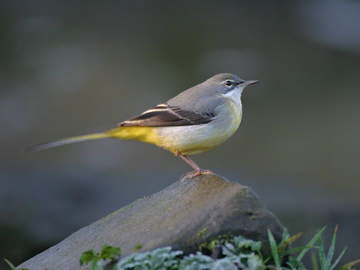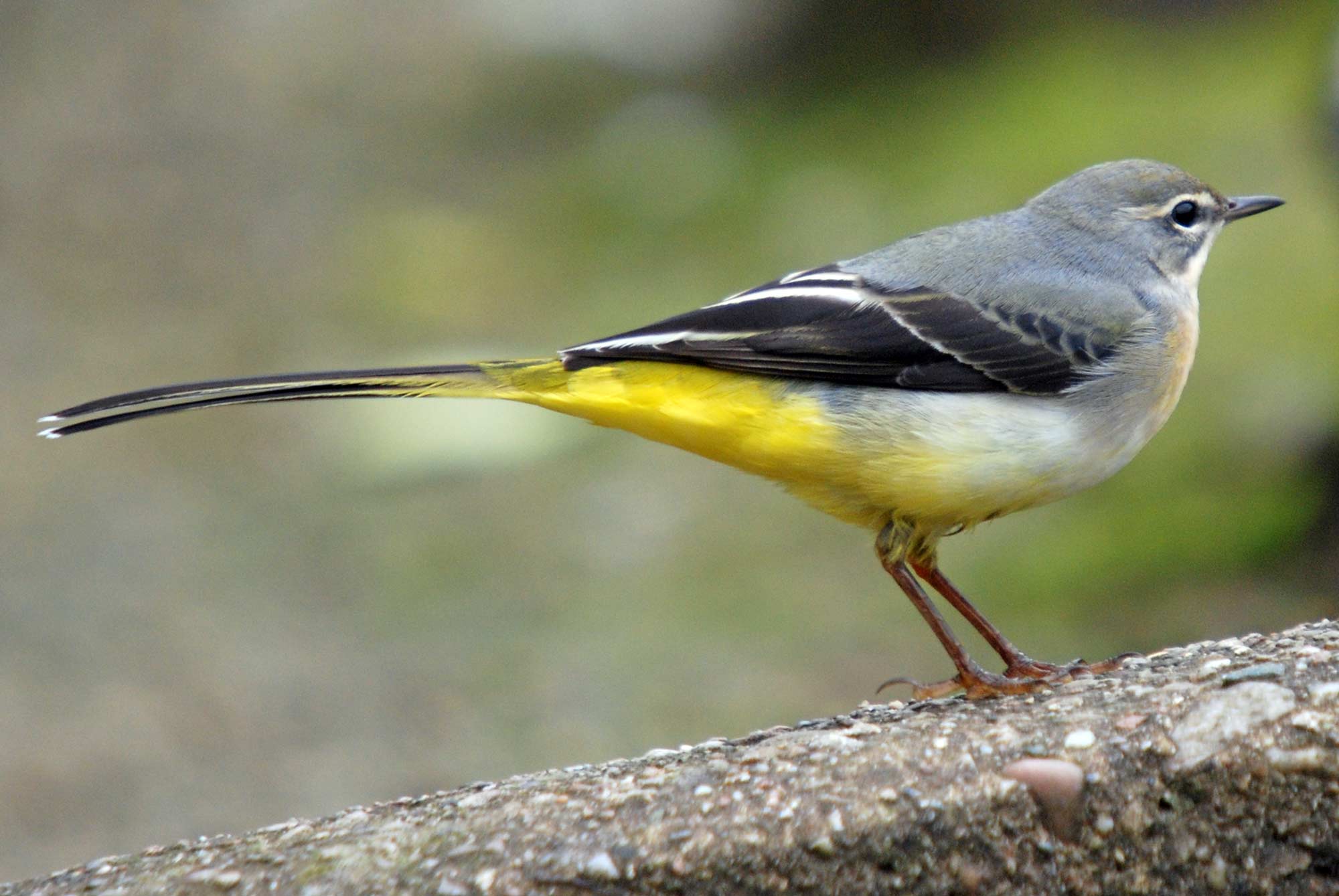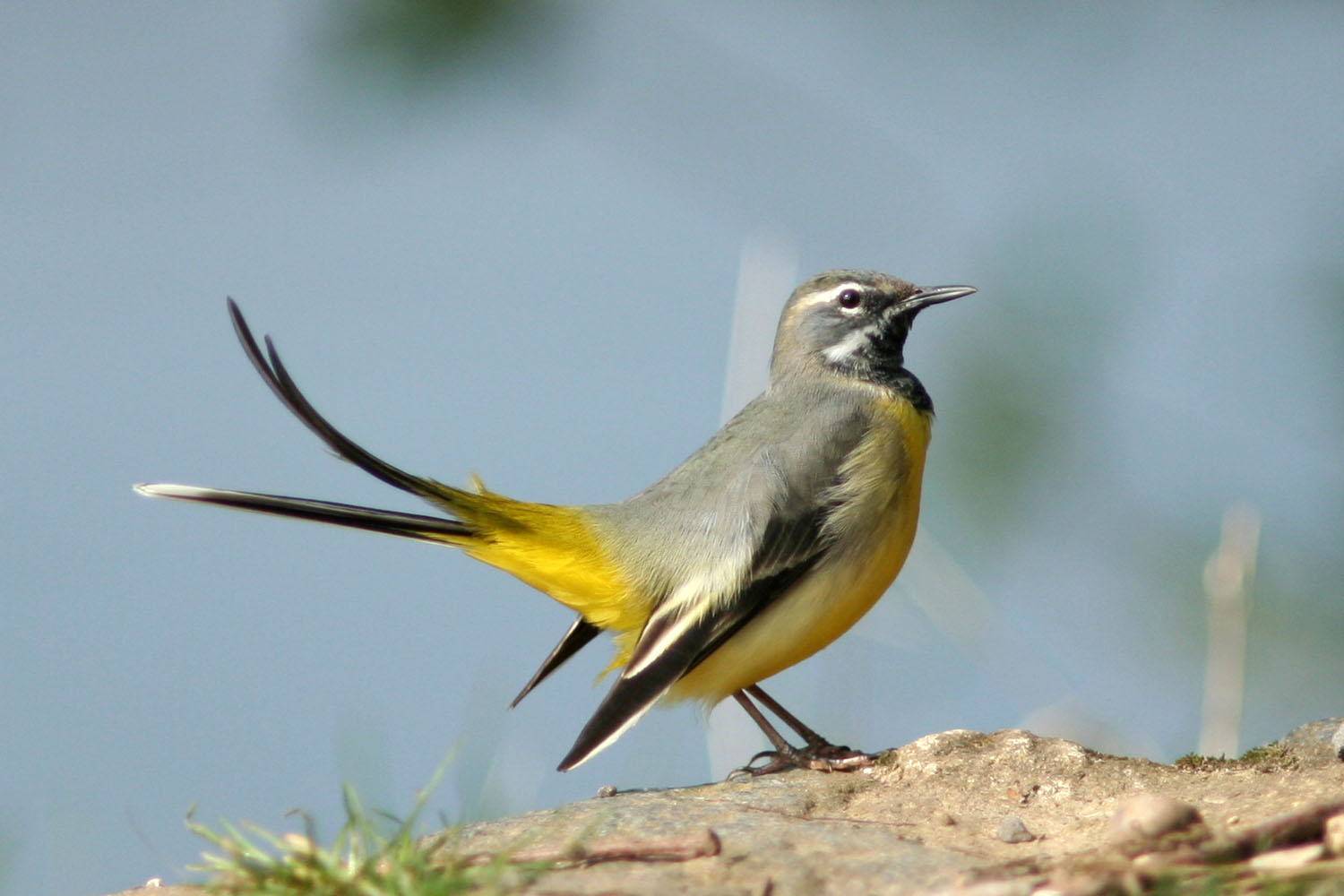
Motacilla cinerea
TAXONOMY
Motacilla cinerea Tunstall, 1771, Yorkshire, England. Six subspecies.
OTHER COMMON NAMES
French: Bergeronnette des ruisseaux; German: Gebirgsstelze;
Spanish: Lavandera Cascadeсa.
PHYSICAL CHARACTERISTICS
7.1–7.5 in (18–19 cm); 0.5–0.8 oz (14–22 g). Gray upperparts;
yellow underparts. Tail longer, more black-and-white than the
yellow wagtail. In summer males develop a bold face pattern
with white stripes and a black bib.
DISTRIBUTION
M. c. patriciae: Azores; M. c. schmitzi: Madeira; M. c. canariensis:
Canary Islands; M. c. cinerea: Northwest Africa and Europe east
to Iran, winters in western Europe, Middle East and Africa
south to Malawi; M. c. melanope: Ural mountains and
Afghanistan east to Amur R.; M. c. robusta: east Asia from
Kamchatka and Okhotsk Sea to northeast China and Japan;
central and eastern Asian birds winter in Pakistan east to
southeast China, and southeast Asia to New Guinea.
HABITAT
Fast-running, rocky upland streams and rivers; also canals, and
lakeshores with stones, trees and dense herbage; in winter also
in lowlands at waterbodies, estuaries and coasts near water.
BEHAVIOR
Territorial when breeding; some defend winter feeding territories;
gregarious only at winter roosts.
FEEDING ECOLOGY AND DIET
Takes mainly aquatic insects; also tadpoles and small fish; forages
on ground or in water; also flycatches.
REPRODUCTIVE BIOLOGY
Monogamous; breeds March through May. Cup nest placed on
cliff ledge, in crevice, bank or tree roots; both sexes build.
Three to seven eggs; incubation 11–14 days, by both sexes;
fledging 11–17 days.
CONSERVATION STATUS
Not threatened. Uncommon to common and widespread.
Some populations decreasing, but no significant threats noted.
SIGNIFICANCE TO HUMANS
None known.
Other popular Animals
Photo Gallery of - Gray wagtail




 Animalia Life
Animalia Life